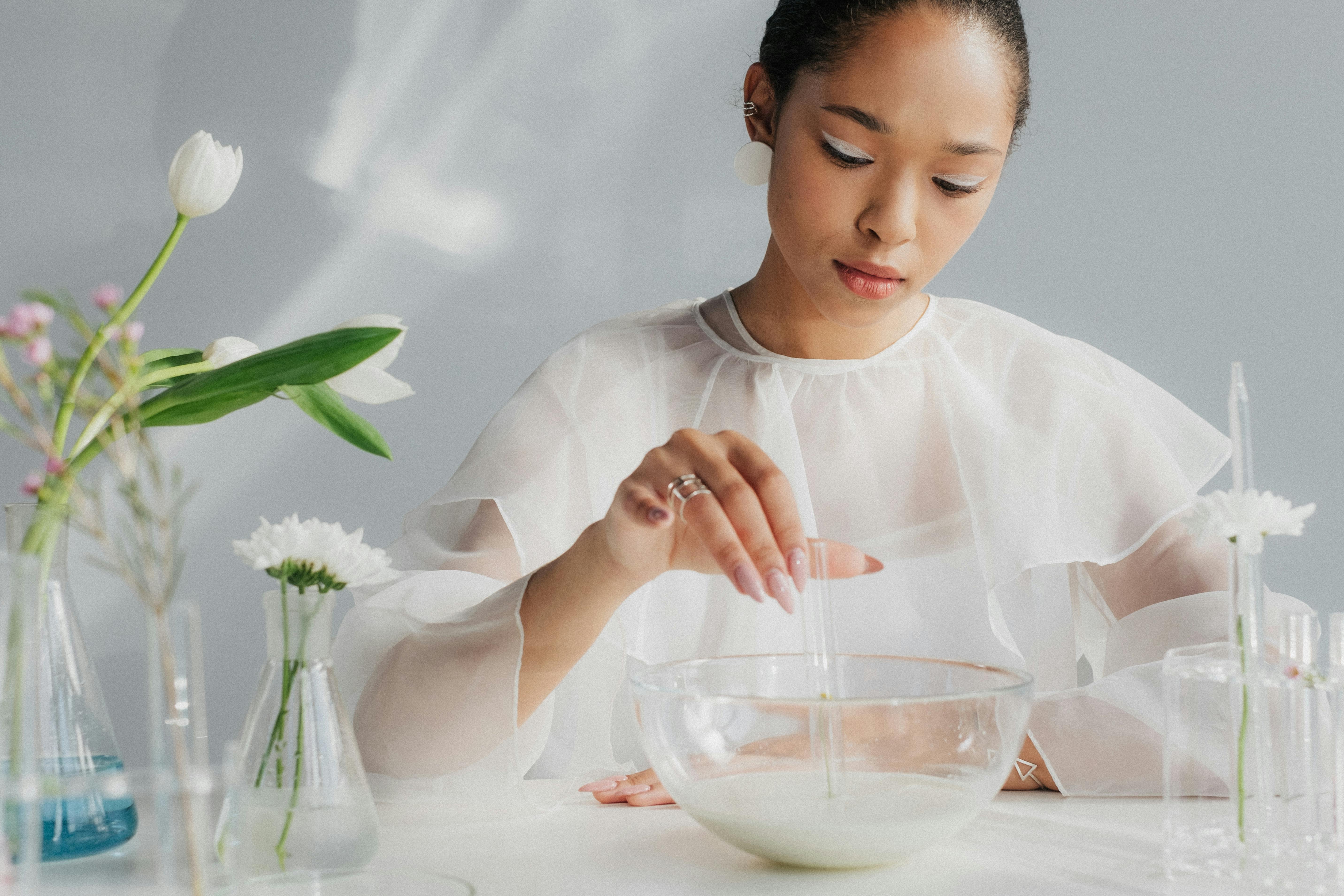Have you ever come across a bad pineapple? Knowing what a bad pineapple looks like can help you to determine whether or not you should purchase it. In this article, we will discuss what a bad pineapple looks like so that you can make an informed decision when selecting a pineapple.A bad pineapple looks unappetizing and dull. The skin will be yellowish-brown, with no green coloration. The fruit may be soft and overly ripe, or it may be hard and under-ripe. It will have a sour or fermented smell, and the flesh will be discolored and mushy. The core of the pineapple will be brownish in color.
How Can You Tell if a Pineapple Is Bad?
It’s always disappointing to bite into a pineapple that has gone bad. To prevent this from happening, it’s important to know how to tell if a pineapple is bad before you buy it. While some signs of spoilage are visible right away, other indicators require a bit more investigation.
When inspecting a pineapple at the grocery store, look for signs of mold, soft spots, or discoloration. If the pineapple looks like it might be past its prime, smell it. A pungent aroma is usually an indication that the fruit has gone bad and should not be purchased. If the smell is sweet, then the pineapple is likely okay to eat.
If you have already purchased the pineapple and brought it home, there are other signs you can look for that will tell you if it has gone bad. First, check for soft spots on the outside of the fruit. If any areas feel mushy or appear discolored, then the fruit has begun to spoil and should not be eaten. Next, take off some of the green leaves from the top of the pineapple and inspect them closely for any mold growth or discoloration; these are also indicators that your fruit has gone bad and should be thrown away immediately.
Finally, when cutting into your pineapple, pay attention to its color and smell. The inside of a healthy pineapple should appear white or yellowish in color and emit a pleasant aroma when exposed to air; if either of these qualities seems off then it’s best to discard your fruit rather than risk consuming something spoiled.
By keeping an eye out for these signs of spoilage when selecting your pineapples at the store or inspecting them at home before cutting into them, you can avoid biting into something unappetizing — and potentially harmful — in your next tropical-inspired dish!
What Are the Signs of a Rotten Pineapple?
Identifying a rotten pineapple can be tricky since they don’t have an obvious expiration date like other fruits. However, there are several telltale signs that can help you identify when a pineapple is no longer suitable for eating. The first sign of a rotten pineapple is the smell. A ripe pineapple will have a sweet, fruity aroma while a rotten one will smell sour or fermented. If the pineapple smells off, it’s best to avoid eating it.
Another sign of a rotten pineapple is its appearance. Look for any discoloration or soft spots on the fruit’s skin, as this is an indication that the fruit has gone bad and should not be eaten. Additionally, if the leaves on top of the fruit are wilted or turning brown, this could also mean that it has gone bad and is not safe for consumption.
Finally, if you cut into the pineapple and find that it has developed an off-taste or texture, this is another sure sign that it has gone bad and should be thrown away. If your pineapple passes all these tests, then you can safely enjoy it!
Spotting a Spoiled Pineapple
A spoiled pineapple is not only unappetizing, but can also cause food-borne illnesses. Knowing how to spot a spoiled pineapple is an important part of keeping your family safe and healthy. There are several signs that can help you tell if your pineapple is still good to eat.
Smell is one of the most important indicators of whether a pineapple is still good or not. If the pineapple has an off smell, it’s likely gone bad and should be discarded. The smell should be sweet, with no signs of fermentation or moldiness.
Another way to tell if a pineapple has gone bad is to look at it closely. A fresh pineapple should have bright green leaves and a golden yellow color on the outside. It shouldn’t have any dark spots or bruises on it, and the leaves should be firmly attached to the top of the fruit. If any of these signs are present, it’s likely that the pineapple has gone bad and should not be eaten.
When you cut into a pineapple, it should have a juicy texture and sweet smell. A spoiled pineapple will often have a slimy texture and an unpleasant odor. The flesh may also look discolored or have black spots on it, which are signs that the fruit has gone bad and needs to be thrown away immediately.
Finally, if you’re still unsure whether your pineapple is good or not, tasting it can give you an indication of its freshness level. A fresh pineapple will taste sweet; however, if it tastes sour or bitter then it’s likely past its prime and needs to be discarded immediately.
By taking some time to carefully examine your pineapples for these signs of spoilage, you can ensure that only safe and delicious pineapples make their way onto your table!
What Are the Warning Signs of a Bad Pineapple?
Identifying a bad pineapple can be tricky, but there are certain warning signs to look out for. The most obvious sign of a bad pineapple is its appearance. A bad pineapple will have brown spots or patches of discoloration on it. It may also be soft and squishy, or have a darker yellowish color than usual. Smell is also an important indicator; if the pineapple has an overly sweet or sour smell, it’s likely not good. Similarly, if it has an ammonia-like smell, it’s probably past its prime. Additionally, if the leaves on top are wilted or brownish in color, chances are the fruit is overripe. If you’re still not sure whether your pineapple is fresh, cut into it and check for any mold inside. If mold is present, discard the fruit immediately as this could make you ill.
When selecting a fresh pineapple at the store or market, there are certain things to consider that can help you determine its quality. Make sure the leaves on top are green and intact; this usually indicates that the fruit has been picked recently and hasn’t been sitting around too long. Also look for any bruises or discoloration on the skin as this could mean that it was mishandled during transport from the farm to store shelves. Finally, test its ripeness by gently pressing your finger against its skin; ripe pineapples should yield slightly to pressure while unripe ones will remain firm.

How Do You Know When a Pineapple Has Gone Off?
Knowing when a pineapple has gone off is important, as eating a bad pineapple can cause food poisoning. The most obvious sign that a pineapple has gone off is its smell. A fresh pineapple should have a sweet scent, while an off one will have an unpleasant and sour odor. If the pineapple smells bad, it is best to discard it.
In addition to smelling bad, an off pineapple will also appear mushy and have brown or yellow patches on the surface of its skin. If the skin feels slightly soft to the touch, it may also be past its peak. The leaves at the top of the fruit should also be green and firm; if they are wilted or brown, this is another sign that the fruit has gone bad.
Finally, if you cut into the pineapple and find that it is discolored or slimy, it should not be eaten. In general, if you are in any doubt about whether a fruit has gone off or not, it is best to avoid eating it as consuming spoiled fruit can cause food poisoning and other health problems.
How Can You Tell if a Fresh Pineapple Has Gone Bad?
When you purchase a fresh pineapple, it is important to know how to tell if it has gone bad. The most obvious way is to look for signs of spoilage such as discoloration, mold, and an unpleasant odor. If any of these signs are present, the pineapple should be discarded.
It is also helpful to take a few other steps when assessing the freshness of a pineapple. Firstly, give the pineapple a gentle squeeze; it should feel firm and have some give when gently pressed. If it feels too soft or mushy then this may indicate that it has gone bad. Secondly, check for any signs of bruising or browning on the skin or flesh of the pineapple. While this does not necessarily mean that the fruit has spoiled, it could be an indication that it will soon go bad and should be discarded.
Finally, take a sniff of the pineapple. A fresh pineapple should have a sweet aroma; if there is an off-putting smell then this could mean that the fruit has gone bad and should not be consumed. It is important to remember that once a pineapple starts to spoil, it will quickly become inedible and should be thrown away immediately.
Most Common Causes of Bad Pineapples
Pineapples are a delicious and nutritious fruit that is enjoyed by many, but unfortunately, bad pineapples can occur from time to time. The most common causes of bad pineapples are improper storage, overripe or underripe pineapple, and a lack of nutrients.
Improper storage of pineapples can lead to rot and spoilage. It is important to store pineapples in a cool place away from direct sunlight and heat sources. If the fruit is kept too warm or left out in the sun for too long, it can deteriorate quickly.
An overripe or underripe pineapple can also be a cause of bad pineapples. When purchasing a pineapple at the grocery store, look for one that is bright yellow in color with no signs of browning or bruising. If it has green spots on the skin, it may not be ripe yet and should be avoided as it could lead to an unpleasant taste and texture.
Finally, a lack of nutrients can also contribute to bad pineapples. Pineapple plants need plenty of nitrogen-rich fertilizer in order to produce quality fruit. Without adequate nutrition, the fruit will not develop properly and will end up being unpleasantly tasteless or sour.

Conclusion
A bad pineapple will have a softer texture, be more yellow in color, and have an off-putting odor. The leaves at the top of the fruit will be brown and wilted. The flesh of the pineapple will be dry and grainy, with black spots or discolored areas. It may even have a sour taste.
It’s important to inspect pineapples before purchasing them, and avoid any that don’t look good or smell right. If you’re going to buy a pre-cut pineapple, make sure it is refrigerated and check for signs of spoilage.
When stored properly, pineapples can last for up to two weeks. However, if they are not stored correctly they can quickly spoil and become inedible. By being aware of what a bad pineapple looks like, you can ensure that you purchase the freshest fruit possible.
Overall, there are several tell-tale signs that a pineapple has gone bad. A bad pineapple will have a softer texture than normal, be more yellow in color, and have an off-putting odor. Its leaves will be brown and wilted, its flesh dry and grainy with black spots or discolored areas. Knowing what to look for when selecting pineapples can help you choose the best fruit and avoid food waste.



